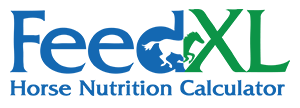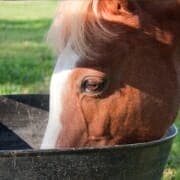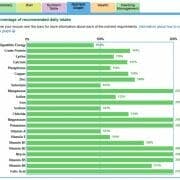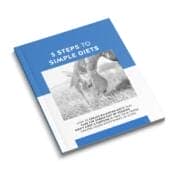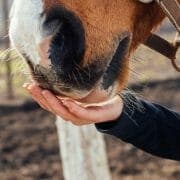Is FeedXL Based on the NRC ‘Nutrient Requirements of Horses’?
FeedXL goes above and beyond Nutrient Requirement of Horses (NRC)
FeedXL is a combination of NRC nutrient requirements and customised nutrient requirements based on our own research as well as information taken from the most recent and comprehensive text on equine nutrition, ‘Equine Applied and Clinical Nutrition’1
The Short Story
In brief, digestible energy is always determined as per NRC requirements as we could find no evidence to support adjusting it from the levels determined by NRC. In practice, DE requirement for an individual horse is an estimate. Many factors, including climate, level of natural exercise the horse undertakes and the actual diet and how efficiently or inefficiently it is digested will impact a horse’s actual DE requirement.
The Long Story
Crude protein and lysine are set as per NRC for pregnant & lactating mares, spelling and lightly worked horses and growing horses. But we slightly elevate both crude protein and lysine requirements for horses in moderate to heavy work as well as breeding stallions. We are perhaps a little conservative on protein and lysine but also see good evidence in practice to show that when crude protein and lysine requirements are met using high quality protein sources we are able to support pregnancy and lactation without the loss of muscle in broodmares and we get well grown and developed yearlings and 2 year olds, allowing us to conclude that the NRC requirements where used are adequate… provided the underlying diet is well formulated.
Calcium and phosphorus requirements are elevated across the board above NRC requirements and are closely aligned with the requirements set by Prof Pat Harris1
Copper, zinc and manganese are similarly elevated across the board from NRC with the exception of spelling horses that are calculated as per NRC requirements. The largest elevations are seen in the growing horse and pregnant mare diets in an attempt to reduce the risk of developmental orthopaedic diseases like OCD.
Selenium is elevated above the NRC requirement. The NRC state that their recommended daily intake for selenium is the level required to prevent classic deficiency symptoms and that more is potentially useful to maintain more optimal immune function. Thus FeedXL uses an elevated selenium requirement that aligns closely with Geor et al1.
FeedXL follows the NRC recommended daily intake for iodine for all classes of horses.
Iron follows the NRC recommended daily intakes for all horses except those in moderate, heavy and very heavy work where requirement is elevated to account for iron lost in sweat.
Sodium, chloride and magnesium largely follow the NRC requirements. There are some small variations, with growing horses sodium requirements being slightly higher than NRC and magnesium being higher for pregnant and lactating mares.
Potassium requirements are higher than NRC across the board but this was more from a practical ‘user interpretation’ standpoint in FeedXL. Because forages are so high in potassium, if we used the NRC recommended daily intake for potassium, we would see several hundred times the required amount in diets and this was worrying for our FeedXL users. Because potassium is so safe we have elevated the requirement to reduce the amount of worry for people analysing diets. In over 20 years of formulating diets we have not seen a potassium deficiency, even with our elevated requirement, nor is it necessary in all but very unusual cases to add potassium to diets.
Very little is actually known about vitamin A requirements in horses. In FeedXL, Vitamin A requirements are guided by Geor et al with Vitamin A elevated across the board from NRC requirements. Likewise vitamin E levels follow a similar trend.
Vitamins D, B1 and B2 are as per NRC requirements.
Vitamins B5, B6, niacin and folic acid are calculated based on small amounts of research in horses as well as humans, rats and pigs. The recommendations for these vitamins are relatively conservative because there are no established NRC equine requirements, but they serve to ensure diets are meeting what we estimate to be the likely dietary requirement for horses.
- Geor, R.J., M. Coenen, and P. Harris, Equine Applied and Clinical Nutrition: Health, Welfare and Performance. 2013: Elsevier Health Sciences.
Do you have a question or comment? Do you need help with feeding?
We would love to welcome you to our FeedXL Horse Nutrition Facebook Group. Ask questions and have them answered by PhD and Masters qualified equine nutritionists and spend time with like-minded horse owners. It’s free!
Click here to join the FeedXL Horse Nutrition Facebook Group
